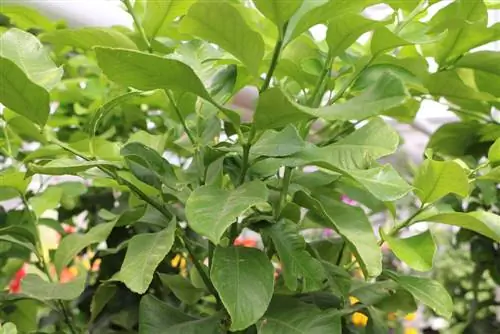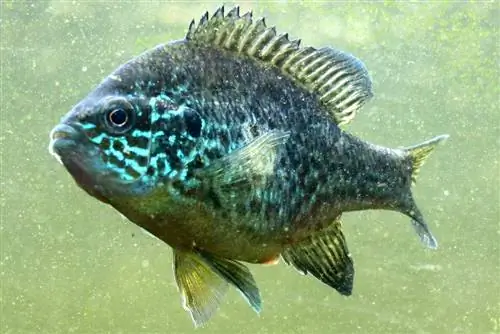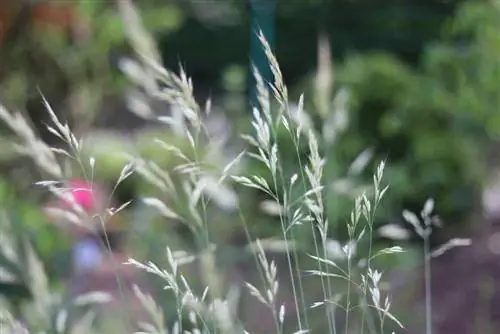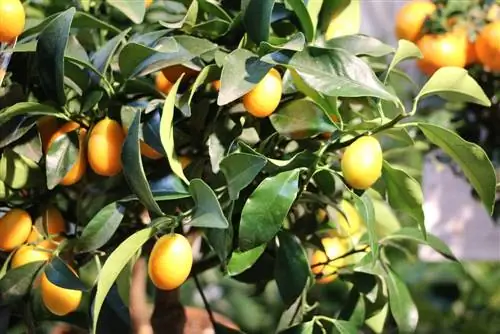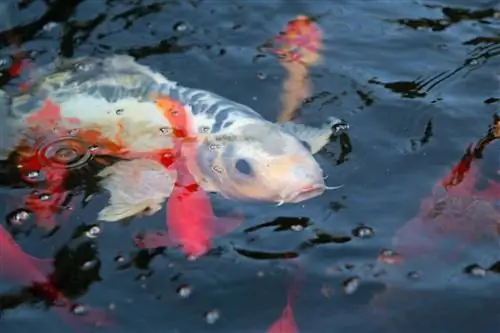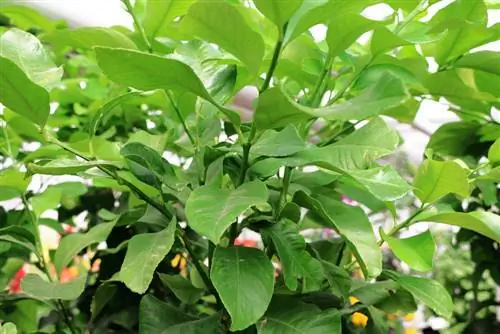- Author admin [email protected].
- Public 2023-12-17 03:39.
- Last modified 2025-06-01 06:48.
The orange tree came to Europe as early as the Renaissance. To this day, the fascination for these plants remains unbroken. However, under the climatic conditions prevailing in this country, the ornamental tree, which belongs to the citrus plant genus, is not hardy. Accordingly, it is only kept in a pot, where it decorates sunny areas in the garden, on the terrace, on the balcony and also in winter gardens in summer. However, keeping it in the living room all year round is problematic.
In its natural habitat, the orange tree thrives in a permanently warm, sunny and very humid climate. In order for it to thrive, bloom and produce fruit here, the conditions in terms of location and care must be adapted as well as possible. In order to avoid serious care mistakes, a few basic things should be taken into account.
Location
Orange trees are very heat-requiring plants. As a result, they prefer a sunny spot. Keeping it indoors all year round is not recommended and will fail in most cases. Even if the plant has a sunny spot by the window, the lighting conditions in the house are not optimal, even in summer. That's why it should be in the garden or on a sunny, south-facing balcony from spring to autumn.
In order to bloom and produce fruit twice a year, the orange tree needs at least 4-6 hours of sun daily, although the roots prefer it a little shady. That's why it makes sense to cover the root area with jute or something similar on hot days. In addition, the plant should be protected from strong and cold winds, especially in spring and autumn.
Floor
- The substrate should be lime-free and permeable with a stable structure
- For young plants that are repotted every 1-2 years, it can be a little finer
- The substrate of older plants should also contain coarse components
- Fine substrates become muddy over time and cause the roots to suffocate
- A stable structure can be achieved by incorporating gravel or granules
- So excess water can drain away easily
Special substrates for citrus plants are available in stores. Professionals recommend a mixture of 40% organic components such as peat, bark mulch or coconut fiber and 60% mineral components such as expanded clay, lava quarry or pumice.
Bucket keeping is the best choice
In the climate prevailing in Germany, you should not plant orange trees in the garden. They are not hardy and would not survive a winter outdoors. Accordingly, keeping them in containers is the best alternative. So you can put them out in the garden when the weather is warm and sunny, because these plants really appreciate the sun and fresh air and return the favor with lush growth, rich flowers and maybe even fruits.
The respective plant pot should have sufficient drainage holes and, above all, be large enough. It is also recommended to use plant pots made of clay; they do not dry out as quickly in summer as, for example, plastic pots. Don't forget a drainage layer made of coarse gravel on the bottom of the pot. This not only ensures good water drainage, but also weighs down the pot so that it doesn't tip over with every small gust of wind. The heavier the planter, the more stable it is.
Tip:
To minimize evaporation through the walls of the pot, you can brush the inside of it with cooking oil before planting, this will close the pores in the clay.
Pouring
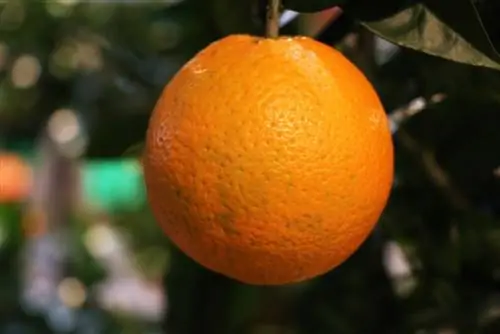
Special attention should be paid to irrigation. These plants are usually overwatered, causing them to rot and ultimately die. You can avoid excessive watering using a moisture meter. It is inserted into the ground and uses a scale to show the moisture content of the soil, which in turn provides information about whether and how much needs to be watered. Otherwise, you shouldn't just focus on the upper substrate layer, because the lower layers are usually still relatively moist.
- If possible, you should only water with lime-free water
- Watering water should always be at a comfortable temperature and not too cold
- Water preferably using the submersible method
- This way even the deep roots are reached
- To do this, place the pot once a week in a container with water that is not too cold
- If no more water bubbles appear, remove the pot
Basically, you should take the current weather conditions into account when watering. If it is warm and windy, evaporation is significantly higher than in cool and humid weather. By the way, an orange tree naturally evaporates less water on very hot days; it closes its stomata and thereby reduces evaporation to a minimum. While curled leaves indicate a lack of water, yellow leaves can be an indication of too much moisture.
Fertilize
Like all citrus plants, the orange tree also needs sufficient nutrients during the growth period, i.e. as long as it produces new shoots, flowers and fruits. If the plant is optimally supplied with nutrients, it will bloom twice a year, in spring and autumn. Fertilize for the first time when budding begins around March/April and then once a week until July. Special fertilizers are best suited for citrus plants; they are tailored to the needs of these plants. Fertilizers with a reduced phosphate and a higher nitrogen content are important. They should also contain important trace elements such as iron, magnesium, zinc and copper.
Tip:
It is best to always apply the fertilizer with the irrigation water and not to apply it to the dry substrate, as this would burn the roots.
vaginas
Orange trees do not necessarily have to be trimmed. Nevertheless, a topiary cut before wintering and a rejuvenation cut in the spring are definitely useful for older, sparse plants that have not been pruned for a long time. Since these are evergreen plants, loss of leaves is always to be expected after cutting, but this is not unusual. The next time it shoots, the plant will sprout even more magnificently.
Topiary
The best time for a topiary is in autumn, before the orange tree moves to winter quarters. These pruning measures help to minimize evaporation in winter and also reduce the space required by the plant during overwintering. During topiary trimming, all branches that disrupt the desired shape of the crown are removed, as well as all shoots that are too close together and have a whorled growth that protrude into the interior of the crown.
It goes without saying that all dead wood and stunted shoots should also be cut out. For a dense and well-branched crown, you also shorten the outermost young shoots and all new shoots that are longer than 40 cm by about half. So-called water shoots should always be removed as soon as they occur; they cost the plant unnecessary energy.
Tip:
It should always be cut close to the trunk or a strong side branch and no stumps should be left behind. Remaining stumps could promote an infestation by the Botrytis fungus.
Rejuvenation cut
If a shape cut is carried out regularly, a rejuvenation cut can usually be dispensed with. A rejuvenation cut not only serves to maintain the he alth of the plant, but also to rebuild the crown. In contrast to topiary, almost all of the foliage is removed here and the entire crown is cut back to approx. 15 cm long stumps.
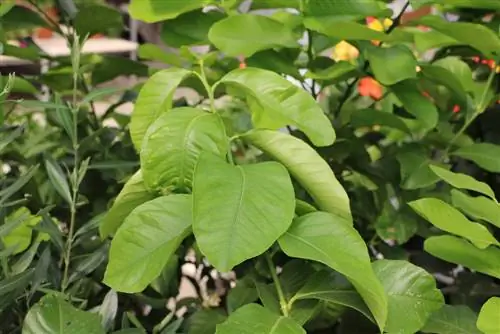
You should pay no attention to leaves and buds or possible fruits, even if it hurts. While stumps are not desirable for topiary pruning, they are indispensable for the development of the plant for rejuvenation pruning, because the plant sprouts again from the sleeping buds of these stumps. The new shoots that subsequently grow are shortened to a length of 30 - 40 cm in order to achieve better branching of the crown.
Tip:
Scattered or herbaceous shoots that grow out of the crown can easily be trimmed all year round. Cutting tools used should be disinfected as much as possible before cutting to prevent the transmission of pathogens. In addition, the tools in question should be very sharp to avoid bruising when cutting.
Wintering
The right winter quarters
Since orange trees are very sensitive to cold, overwintering must always take place in a frost-free area. However, they should be put away as late as possible and taken outside again as early as possible so that they can grow under as natural conditions as possible for as long as possible. This makes them generally more resilient. When is the right time depends, among other things, on the weather conditions, which vary from region to region.
- In the east, southeast and high altitudes, bring them into the house from mid/late October
- In the north of Germany from around the beginning of November to winter quarters
- In the west and southwest, leave it outside until around mid-November
- Moving to winter quarters when temperatures permanently fall below 10 degrees
- Check for possible pest infestation before putting away
- Remove an existing infestation before clearing away
- Overwintering places with temperatures around 10 degrees are optimal
- Winter quarters must be frost-free
- Unheated but frost-free greenhouses and winter gardens are particularly suitable
- Here the light output is highest
- Ensure adequate ventilation on sunny days
- Be sure to avoid drafts
- At temperatures up to 10 degrees, the orange tree goes into a dormant phase
- Heated living spaces are completely unsuitable for wintering
In the cold season, the light available is significantly limited. Nevertheless, these evergreen plants require a minimum amount of light even in winter. This is the only way they can maintain their vital functions throughout the entire period. Since the number of hours of sunshine in winter is usually not enough, it is advisable to use additional plant lamps depending on local conditions. The root ball should also be protected from cold from below. To do this, you can place the pot on a Styrofoam plate or coconut mat and also wrap it with jute or fleece.
Care during wintering
If the temperature and lighting conditions are optimally adjusted, the correct care in the winter quarters is important. The orange tree also needs to be watered and fertilized now, but only in moderation. Normally it is enough to fertilize the plants once and water them as needed, i.e. H. always only when the upper third of the substrate is dry. As already mentioned, a moisture meter can be very useful here and protect against drowning the plants. Too much moisture is the biggest enemy of citrus plants like the orange tree. With proper care, the plants welcome spring with a wonderfully beautiful flower.
Tip:
Orange trees should always be kept cool over the winter. In this way, abrupt changes between temperature and lighting conditions can be avoided, as they would severely impact the plant and lead to leaf drop. Home living rooms are usually too warm and too dark for citrus plants to overwinter.
Repotting after the winter break
While annual repotting of young plants is advisable, older plants should be repotted every 2-3 years, because then the roots usually become felty and the substrate is exhausted. The best time to do this is immediately after the winter break, because from now on the roots will grow stronger again. The size of the new pot depends on the size of the root ball and should be about a third larger than the ball.
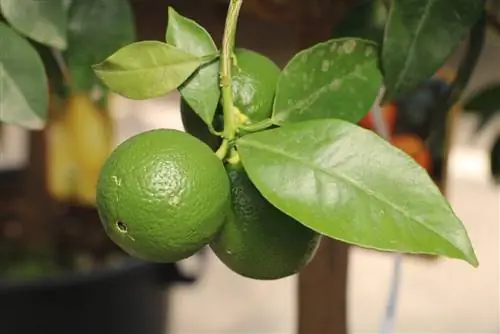
Good drainage on the bottom of the pot is at least as important. Then add a few centimeters of the new substrate. Then carefully lift the plant out of the old pot. The loose soil and the upper, unrooted substrate layer are removed. When putting the plant in, make sure that it is at the same height in the new pot. By gently tapping the wall of the pot when filling with substrate, you can avoid cavities in the root area. Finally, press the soil down and water the whole thing generously.
When to go outside?
Basically, the duration of overwintering should be kept as short as possible. When is the right time to put the plants out again depends on the weather and the prevailing night temperatures. In any case, it should be frost-free, both during the day and at night.
- Clear out as soon as the night temperatures are permanently in the positive range
- Don't rely solely on weather forecasts from the German weather services
- In mild regions the plants can come out a little earlier than in cold areas
- Slowly accustom the orange tree to the new conditions
- Do not place in direct sunlight immediately
- Otherwise there is a risk of burns
- If possible, go outside on a cloudy day
- Initially choose a shady spot
- A protective house wall or a place under a roof is good
If, despite everything, there is frost damage because you may have made a mistake with the right time, this does not necessarily mean that the orange tree will die. The young shoots, buds and flowers in particular usually show signs of frostbite because they are the most sensitive. If the damage is still relatively minor, you can cut off the affected parts of the plant. If the frost has already damaged branches and twigs, in the worst case scenario you can no longer save the plant. Until that happens, temperatures have to fall well below zero degrees.
Propagate
Sowing
For sowing, you should only use fresh seeds from fully ripe fruits, as they can only germinate for a maximum of a week. Therefore, immediately after removal, they are placed about 1-1.5 cm deep in a sandy growing substrate, for example in a greenhouse. Then moisten the soil and place the whole thing in a warm and bright place with temperatures between 20 and 30 degrees. You can also use commercially available source tabs. If you soak the seeds in lukewarm water for about a day before sowing, this can accelerate germination. It can then take between three and six weeks for germination. The plants can then be isolated and cultivated accordingly.
Cuttings
Propagation via cuttings is a little easier. To do this, cut young shoot tips that are approximately 15-20 cm long and should have several buds and 1-2 leaves. These cuttings are then placed in a rooting hormone and then about a third in small pots with quartz sand. The sand is moistened and a translucent film is placed over the pots. Then place in a warm and shady place. To root, the cuttings now need temperatures between 20 and 25 degrees and a consistently high level of humidity.
Diseases and pests
Base rot
Root rot is probably caused by a fungus. An infestation usually begins at the bottom of the trunk and can spread throughout the entire plant. Parts of the bark are darkened and are flaking off. Affected plants secrete a rubbery substance in these areas. As a rule, these plants die.
Scale insects
Scale insects are usually the result of unfavorable keeping conditions; it is often too warm and too dry. They can be recognized by small brownish shields on leaves and shoots. They can be combated with oil-based agents and potassium soap.
mealybugs and mealybugs
These pests also feel particularly comfortable in warm, dry air. They are located on the leaf axils, undersides of leaves and shoot tips and can be treated with sprays against sucking insects. The treatment must be repeated several times.
Spider mites
The spider mite is noticeable because of the fine webs it leaves behind on the plant. It is also a sucking insect. Higher humidity and the use of predatory mites can reduce infestation. In addition, spraying with oil-based agents can be helpful.
An ornament for every sun terrace
Anyone who has ever seen a blooming orange tree is fascinated by the wonderfully beautiful, snow-white and pleasantly scented flowers, which, together with the shiny green foliage, create spectacular accents. Even if the care is a little more complex, this plant is worth every effort and rewards you with strong growth, magical flowers and perhaps even juicy fruits.

